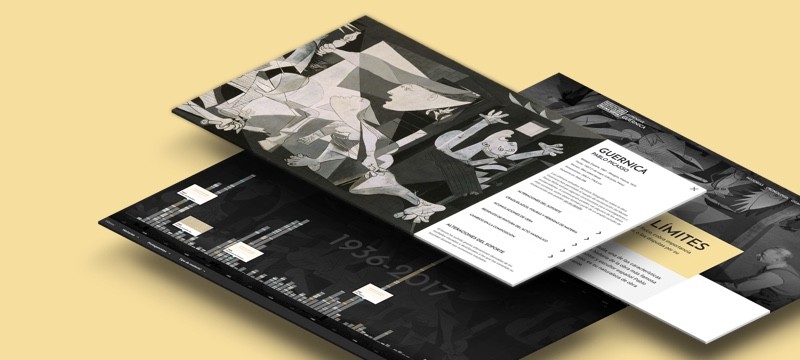Guernica: Studies and Postscripts, Museum of Modern Art, New York, 1967
To commemorate the thirty years since Guernica was created, an ensemble of thirty-eight preparatory paintings and drawings and sixteen postscripts, along with four of Dora Maar’s photographs taken to document the painting’s transformation, was installed. The person in charge of organising the landmark show and putting together the selection was Alfred H. Barr Jr., director of the Collections Department at the Museum of Modern Art (MoMA), in New York. On top of that, the exhibition took place the same year that Barr officially withdrew from the institution.
This exhibition, which entailed neither a large flux of works nor big production costs, was yet another example of MoMA’s effective exhibition programme. Pertinent in its approaches and with a keen awareness of what was required, the programme consolidated MoMA’s position as one of the foremost museum institutions internationally, and in a period marked by the reinforcement of critical museum discourses, new art centres and new settings focused on contemporary art (for instance documenta, in Kassel, which began in 1955).
The exhibition, open to the public for eight months (2 June 1967 — 13 February 1968), and a survey of the three decades since Guernica and its associated works came into being, paid homage to Alfred H. Barr Jr.’s work at MoMA. The great painting of the 20th century was hung there because of Barr, the art historian who had shown the greatest interest and perseverance in the study of Pablo Picasso up until that juncture. His books and catalogues, for instance Picasso: Forty Years of His Art (1939) and Picasso: Fifty Years of His Art (1947), the subject of his PhD thesis, are key frames of reference and knowledge on the artist from that time. Moreover, the notes and exhibit labels which, as director of the museum and director of Collections, he wrote for Guernica and its preparatory drawings and postscripts, never stopped gaining currency in the years the painting was in the museum, as the 1967 press release for the exhibition attests, assembling what had been written years earlier.
Nevertheless, in addition to ratifying Barr’s management of Guernica, the exhibition gave substance to the decision taken by Picasso in 1939, and in 1957, to keep the painting and associated works on loan at the museum. Two months before the exhibition was unveiled, in early April 1967, a group of American artists asked Picasso to withdraw Guernica from MoMA as a symbol of protest against the USA’s intervention in the Vietnam War and the bombings of the country that followed. Despite the mobilisation of different collectives — with Angry Arts the most active — and the differences this request caused between staff and trustees at the museum, and critics and art historians, Picasso refused to sign the petition, alluding to the iconic, anti-war status of the painting.


![Weeping Woman [II] Weeping Woman [II]](/sites/default/files/styles/medium/public/documento/GUE-1959_0.jpg?itok=Yd6PJC9E)

![Study for the Horse [IV]. Sketch for Guernica Study for the Horse [IV]. Sketch for Guernica](/sites/default/files/styles/medium/public/documento/GUE-1907.jpg?itok=Z3icfWyM)